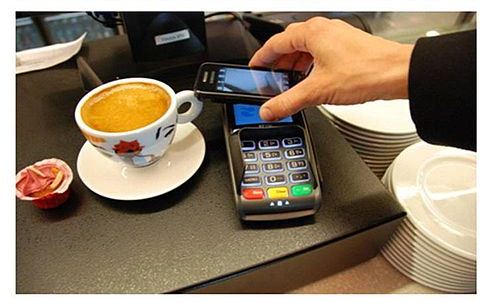In a networked economy, everything is connected, tracked, personalised and direct. Over the past 12 months, we have most significantly seen an increase in the use of alternative payment methods having a big contribution to the networked economy we live in. Most notably we have seen a rise in mobile payments and there are now a number of key options available: Apple Pay, Google Wallet and CurrentC.
December 3, 2014

Telecoms.com periodically invites expert third-party contributors to submit analysis on a key topic affecting the telco industry. In this article William Dudley, Group Director of Global Strategy & Solutions at SAP Mobile Services shares his thoughts on mobile commerce, and why in his view it’s not all been plain sailing.
The networked economy – enabled by real-time data analytics, cloud and an exponential growth in the number of connections between people and devices – represents the next economic revolution.
In a networked economy, everything is connected, tracked, personalised and direct. Over the past 12 months, we have most significantly seen an increase in the use of alternative payment methods having a big contribution to the networked economy we live in. Most notably we have seen a rise in mobile payments and there are now a number of key options available: Apple Pay, Google Wallet and CurrentC.
Unless you’ve been completely sequestered away from technology news as well as mainstream news, you will have heard of the many alternative payment apps now available to consumers. In Europe, the share of alternative payments including mobile and e-wallets is forecasted to reach up to 20% of the total payments by 2020. As consumers are increasingly using their phones and other options for payments I thought I would look into the arguments surrounding the evolution of payments and the apps available.
The majority of people today are leading busy lives and are increasingly looking for quicker and more efficient ways to do things. With the Christmas shopping season upon us, mobile payments offer another option for consumers wanting to get their shopping done with ease. Without having to use chip and pin or find a cash point, mobile payments are instantaneous and hassle free.
As if the choice of products and services to buy isn’t enough for consumers, there is now even more choice in how to make those transactions. Consumers want the freedom to be able to pay how they want and the more options available the better. According to a Forbes article all physical coins and notes will be obsolete in the future due to the security and convenience of mobile phones – hoorah! The article also cites a study by Visa stating that Americans are twice as likely to carry their phones rather than cash and those between 18-34 are four times more likely. The market is clearly an expanding one and it is most definitely only set to grow exponentially in the next few years.
These stats shouldn’t really be a surprise. It has been reported for several years now the use of cash is declining year-on-year with consumers opting for cards and more recently alternative payments to buy products and services. The convenience of not needing to use chip and pin or find a cash point is something that is appealing to consumers who are too busy or forget to get cash out. A few years ago it was shocking when customers began to use their cards more often than cash, especially for small ticket items, but this is now deemed ordinary. The same will go for mobile payments, right now it is new but as technology advances consumer actions will evolve and mobile payments is something that will go from strength to strength.
A key concern for consumers however is security. In a time where companies seem to get hacked constantly mobile payments can seem worrying for some. NFC is the technology embedded in Androids and Apple’s iPhone 6 and 6 Plus along with tablets and wearables to make contactless payments. This technology allows two local devices to share small bits of data allowing payments to be made. The technology is so complex that the hacking or intercepting of data is especially difficult and is therefore actually one of the safest methods of payments available.
As there are many alternatives available to consumers now I thought it beneficial to have a run through of the key options. It has been a bumpy start for many. Google Wallet which has been out for several years, was deemed a “failure” by many. I wouldn’t go as far as that but I think it was just a bit before its time – people were afraid of the unknown. Since that time, countless individuals have paid for goods and services at various brick and mortar locations around the globe using Google Wallet. But what that has done is establish a number of PoS terminals where you might see a little wifi symbol with a hand holding a device (known as the “contactless payment symbol”).
Apple’s Point-of-Sale (PoS) ecosystem Apple Pay became available on the iPhone 6 and 6 Plus on the 20th of October, coinciding with the release of iOS 8.1. It will also be compatible with Apple Watch when that rolls out in early 2015. There have been mixed reviews of Apply Pay, which can only be used in shops on the Apple supported location list – although this has actually been disputed by some claiming they have used Apple Pay at terminals that simply show the contactless payment option. Having personally done so at several locations not on Apple’s official list, I can attest to this claim. This is not officially confirmed but it certainly shows that if Apple and Google would actually collaborate, their NFC-enabled devices would work in even more retailers’ outfits.
Unfortunately, some weeks ago a number of retailers began blocking Apple Pay and Google Wallet on their PoS terminals within the US market. Instead, these companies will be supporting an alternative solution called CurrentC to launch in 2015. CurrentC does not use NFC, but QR codes to be scanned by the mobile device at check-out time. Many technology press articles imply that CurrentC is much more difficult to use than the NFC-based, contactless options.
This change has riled a lot of NFC users who were just fine with NFC-based contactless payment options that quite a few of these retailers supported. I think these retailers are taking a step backward, as the NFC-based PoS payment options did provide the level of security needed to take definitive steps to overcome the preponderance of retail hacking attacks that we’ve seen over the last few months.
For the record, I think that CurrentC will ultimately fail as consumers will gravitate towards solutions that offer them security, ease of use, and privacy – areas where CurrentC is somewhat lacking, based on what I have seen. I believe many – if not all – of the retailers will ultimately come back to NFC-based contactless payment options and I think they’ll be welcomed. While many across the world are now opting for mobile payments it is something that is still yet to really take off but with real benefits associated with it including convenience, time and security it is just a matter of time.
 William Dudley has almost 30 years’ experience building and managing telecommunications network infrastructures. He provides strategic guidance and solutions for SAP Mobile Services in the areas of mobile messaging and communications channels (SMS, MMS, RCS, WebRTC, voice, video), mobile consumer engagement, and IP/IPX solutions.
William Dudley has almost 30 years’ experience building and managing telecommunications network infrastructures. He provides strategic guidance and solutions for SAP Mobile Services in the areas of mobile messaging and communications channels (SMS, MMS, RCS, WebRTC, voice, video), mobile consumer engagement, and IP/IPX solutions.
Read more about:
DiscussionAbout the Author(s)
You May Also Like








.png?width=300&auto=webp&quality=80&disable=upscale)


_1.jpg?width=300&auto=webp&quality=80&disable=upscale)


.png?width=800&auto=webp&quality=80&disable=upscale)